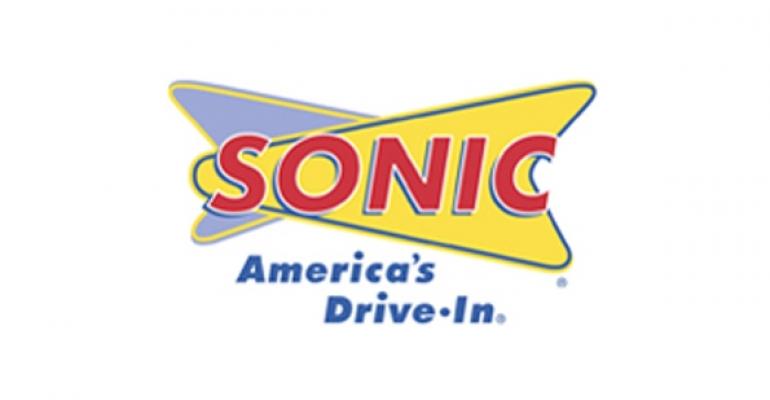Sonic Corp. executives credited a robust product pipeline, which has just debuted a line of grilled cheese sandwiches, and renewed emphasis on its five-daypart strategy for improved profits in its first quarter.
Sonic said profit rose 12 percent in the quarter ended Nov. 30 at the Oklahoma City-based drive-in chain, with the company earning
$6.1 million, or 11 cents per share, compared to $5.5 million, or 9 cents per share, in the prior-year quarter. Revenue dropped to $126 million from $128.3 million, partially due to refranchising of some company-owned units.
RELATED
• Sonic expands chicken sandwich offerings
• Sonic swings to profit in 3Q
• More restaurant industry finance news
Systemwide same-store sales increased 3 percent during the quarter, reflecting a 4.2-percent rise at company-owned drive-ins and 2.9-percent improvement at franchise units. Margins at company-owned units improved by 80 basis points, Sonic said.
J. Clifford Hudson, chairman and chief executive of Sonic, said in an analyst conference call that new products, beefed up advertising on cable and continued emphasis on the company’s five-daypart strategy, from breakfast to later-evening, would continue to differentiate the drive-in concept.
“This quarter, our new product news highlights our distinctive grilled cheese sandwiches and some real differences about those,” Hudson said.
Sonic is offering three versions: a Philly Steak Grilled Cheese Sandwich, the BLT Ultimate Grilled Cheese Sandwich and the Cheddar Bacon Ranch Grilled Cheese sandwich.
“These are entrée items,” Hudson said. “We also added two new premium Breakfast Toasters to emphasize our breakfast daypart.”
Lynne Collier, an analyst with Sterne, Agee & Leach, on Friday maintained a buy rating on Sonic stock, explaining that the new products and a shift in advertising dollars to national cable, with about 67 percent expected on cable, and new products should boost traffic and sales.
“In addition to premium chicken sandwiches introduced in 1Q, the company rolled out new premium grilled cheese and Breakfast Toaster sandwiches this quarter,” Collier wrote in an investor note.
She added that “lack of product innovation” was one of the reasons Sonic’s same-store sales fell off during the recession. “We believe this is ramping back up again given the hiring of a new team to focus exclusively on product development,” Collier said.
Hudson said Sonic plans to open at least three new company-owned stores in this fiscal year, perhaps in the new smaller prototype that the brand has been testing.
“The smaller building prototype is not a radical departure in terms of the concept,” Hudson said, adding that the company has five to seven of the units open.
“We've opened them in new markets,” he said. “We've opened them up in core markets. But it's based on the building size that we used 15 to 20 years ago. So we've got a number of buildings that are this size. What we've basically done is reduce the amount of canopy space, the number of stalls, and put a little more emphasis on the drive-thru.
Hudson added that it’s a format that the chain’s operators are accustomed to, “so we have good evidence that we can get all the throughput that we need on this design.”
Analysts also noted that Sonic is taking a 3-percent pricing increase, exceeding the commodity inflation of 1 to 2 percent.
“We are approaching pricing in a much more strategic fashion than we had three and four years ago,” Hudson explained. “So all of our pricing is done in a thorough market test to make sure that we can see sustained kind of the ability to … make that pricing stick without affecting traffic negatively.”
Hudson said the company plans to make sure its pricing is competitive both with other restaurants and inflation in food at home.
On Nov. 30, Sonic had 3,549 drive-ins opened, with 409 of those owned and operated by the company.
Contact Ron Ruggless at [email protected]
Follow him on Twitter: @RonRuggless





